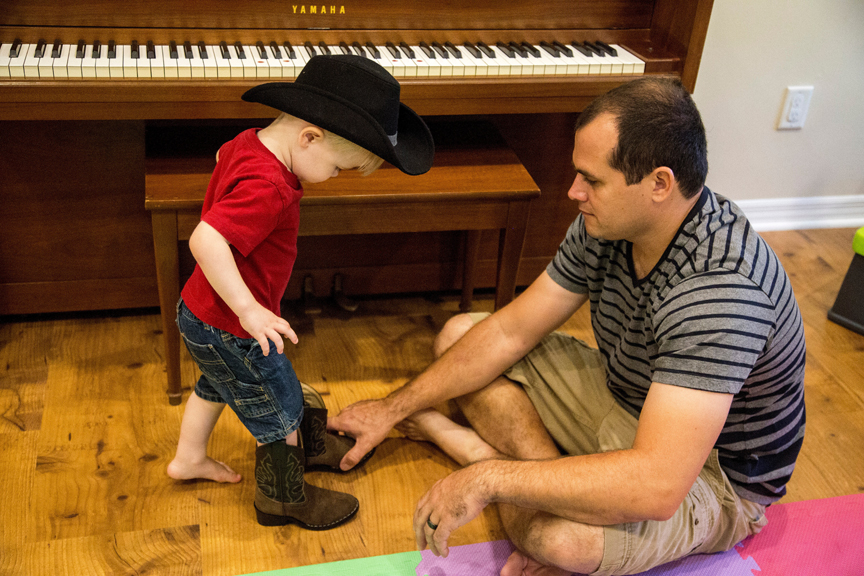- Behavior
- Education
- Health
By age 3, your little one’s brain will be 80 percent of its adult size!

In this article, you’ll find answers to questions like:
1. Should all kids develop at the same rate?
2. What percentage of kids are at risk for delays?
3. Who can help?
By 2 years old, most toddlers are able to walk up steps, turn book pages, form simple sentences and put on clothing.
If your child isn’t, perhaps it’s something to consider. The earlier developmental delays are identified and addressed, the better the outcome for the child will be.
As parents, we often hear the term developmental milestones and know it’s important our children hit these markers at key moments of growth. But what exactly do child development specialists mean by that phrase?
1. SHOULD ALL KIDS DEVELOP AT THE SAME RATE?
“First, it’s important to remember that every child is an individual,” says Randee Gabriel, programs manager at 211 Palm Beach/Treasure Coast. “There are no two children that will hit every milestone at the exact same time. Still, there are crucial cues to look for at each age.”
Gabriel explains that children up to age 5 should reach milestones in how they play, learn, speak, act and move (see chart below).
“This is because a young child’s brain develops incredibly quickly,” says Gabriel, adding a newborn’s brain is about a fourth the size of an adult brain. By age 3, the brain grows to 80 percent of adult size on its way to 90 percent by age 5.
MILESTONES AT A GLANCE
|
Age |
Gross motor |
Fine motor |
Cognitive, linguistic and communication |
Social-emotional |
|
1 year |
Stands alone; pulls self to stand; takes steps with or without support |
Puts block in cup; picks up objects with finger and thumb; points |
Imitates vocalizations/ sounds; babbles; says single words |
Waves hi or bye; imitates activities; plays pat-a-cake; follows simple commands |
|
2 years |
Throws ball overhand; jumps up; kicks ball; walks up steps |
Stacks towers of four to six cubes; turns book pages |
Says 50 words; names pictures; combines words; follows simple instructions |
Puts on clothing; removes garments; uses pretend items in play |
|
3 years |
Balances on each foot; jumps on one foot |
Wiggles thumb; copies lines and circles; stacks towers of six to eight cubes; strings large beads |
Speaks more clearly; names colors and pictures; names seven body parts |
Names friends; brushes teeth with help; uses words to describe emotions (happy, sad) |
2. WHAT PERCENTAGE OF KIDS ARE AT RISK?
One in four U.S. children up to age 5 are at moderate or high risk of developmental, behavioral or social delay, according to the U.S. Centers for Disease Control and Prevention. In addition, many children experience delays in language or other areas that can affect school readiness.
“Every age group brings within itself new changes and skills required,” Gabriel says. “While a child may have no concerns at 6 months, this does not guarantee there will be no concerns at 25 months or 48 months or beyond. Rescreening at each interval is imperative to identify these shifts and ensure healthy development over the long term.”
3. WHO CAN HELP?
Detection and intervention are critical for optimal outcomes for children. If you have questions or concerns about your child’s development, call 2-1-1 or chat online and ask for the Help Me Grow program. Help Me Grow services are free, including screenings, information and resource connection.
You can also call HomeSafe for a free screening at 561-383-9800.
SOURCES:
• Centers for Disease Control and Prevention, U.S. Department of Health and Human Services
You May Also Like
-
- Behavior
- Health
- Parenting
Help! What should I do? My baby or toddler won’t calm down
Try changing positions to give new things for your baby to look at or move your toddler from a stressful situation to a quiet place. Read on for more soothing advice from our local …
Read More -
- Behavior
- Parenting
- Safety
5 steps to stopping a tantrum
Want to make your life a lot easier? Then get in the habit of following this routine to tame your child's temper tantrums. (You can thank us later!) …
Read More -
- Education
- Health
- Parenting
Jump-start your toddler's vocabulary through reading
Did you know children memorize words by their sounds even before they start reading? See more reasons why it's so important to read to your children and teach them words everywhere …
Read More
Related resources
-
- Health
- Other
Florida KidCare/Healthy Kids
State-sponsored health and dental insurance for children through age 18
888-540-5437 Website -
- Behavior
- Education
- Health
211 Palm Beach Treasure Coast
Help Me Grow – information, guidance and developmental assessment of children up to age 8
2-1-1 Website Email -
- Education
- Other
- Parenting
Early Learning Coalition of Palm Beach County
Local child-care information, resource and referral, including help paying for care for eligible families
561-514-3300 Website -
- Education
- Parenting
School District of Palm Beach County
Early Childhood Education — information on Voluntary Pre-Kindergarten, Head Start and Early Head Start, which are designed to promote school readiness
561-969-5884 Website
